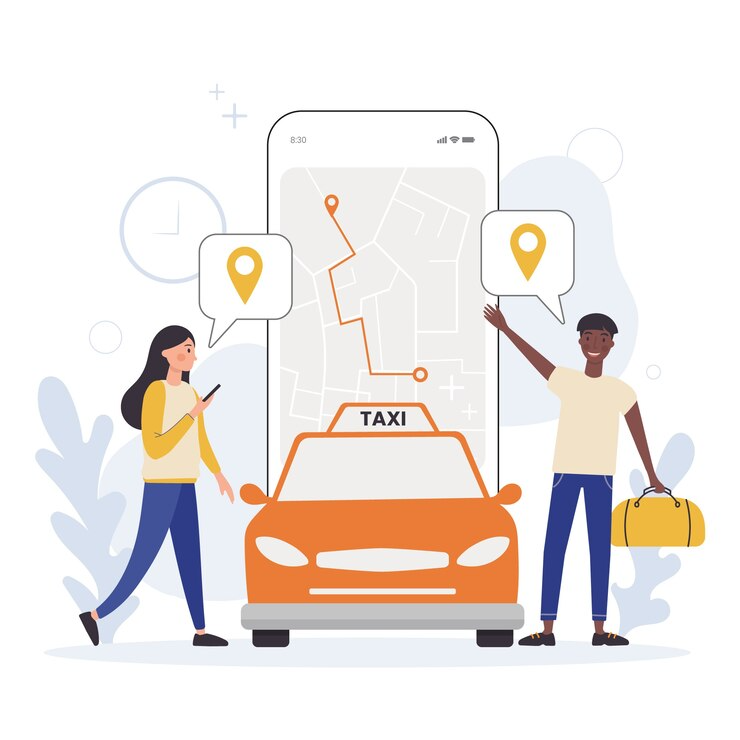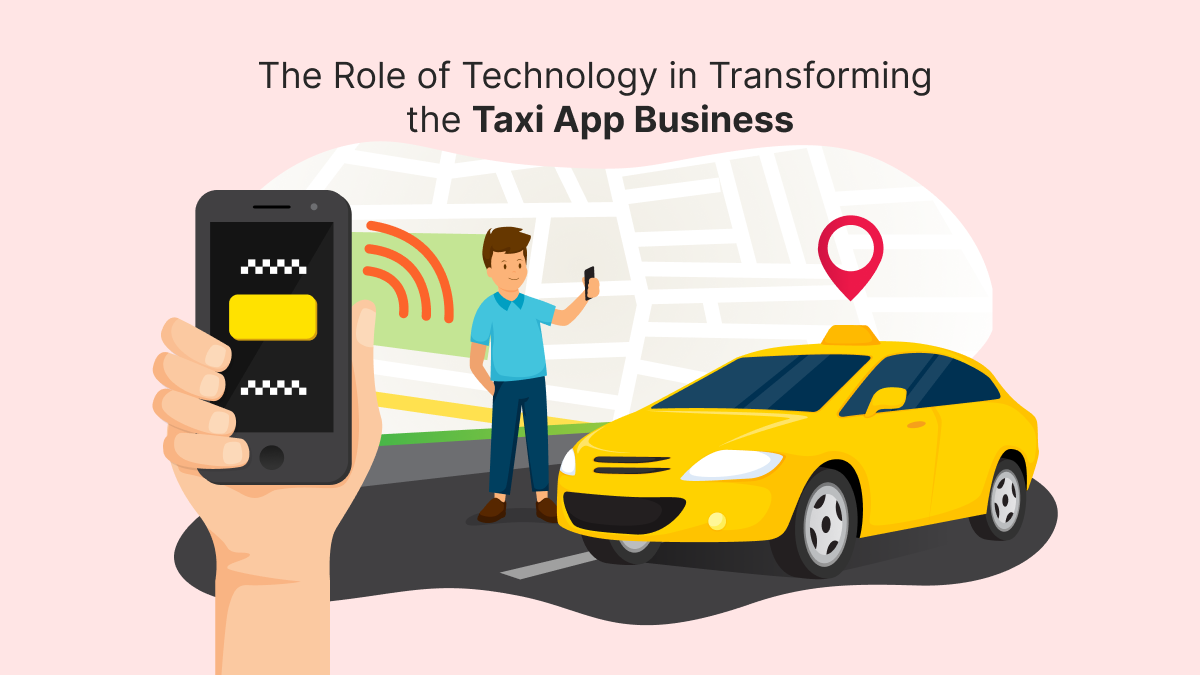The taxi business has seen a massive transformation over the past decade. What was once a traditional industry with limited innovation has now evolved into a tech-driven market. Technology has not only reshaped the way taxi services operate but also changed how people view transportation as a whole. Taxi app businesses, powered by advanced technology, have provided convenience, transparency, and efficiency to riders and drivers alike.
In this blog, we will explore how technology has changed the taxi app business, the key technologies driving this transformation, and the benefits these innovations bring to businesses and customers.
The Evolution of the Taxi Business
From Traditional Taxis to Digital Platforms
In the past, booking a taxi involved either hailing one on the street or calling a taxi service. This process was often inefficient and inconvenient for customers. There was no transparency in pricing, and customers had little to no information about the driver or estimated time of arrival. The introduction of mobile apps changed everything. The emergence of apps like Uber and Lyft created a new way for people to book rides quickly and easily.
The Rise of Taxi App Businesses
Taxi app businesses have taken over traditional taxi models by offering on-demand services that are accessible via smartphones. These apps use location-based technology, real-time tracking, digital payments, and rating systems to provide a seamless experience for users. Entrepreneurs and established taxi services alike have adopted taxi app solutions to stay competitive in a tech-first market.
Key Technologies Transforming the Taxi App Business
GPS and Real-Time Location Tracking
GPS technology plays a vital role in taxi apps. It allows the app to detect the user’s location, find nearby drivers, and provide real-time updates on the ride’s status. Both passengers and drivers benefit from accurate navigation and optimized route suggestions, which help reduce travel time and fuel consumption.
Mobile App Development
The core of any taxi app business is its mobile application. These apps are built using advanced app development frameworks that provide a smooth user experience, quick loading times, and compatibility across devices. Features like booking history, ride scheduling, and notifications enhance the app’s functionality and user convenience.
Payment Gateways and Digital Wallets
Technology has eliminated the need for cash transactions in taxi services. Integrated payment gateways in taxi apps allow users to pay securely through credit/debit cards, digital wallets, or net banking. This feature ensures quick and hassle-free payments while enhancing security for both drivers and passengers.
Cloud Computing
Cloud technology provides a scalable and secure infrastructure for taxi app businesses. It enables the storage of large amounts of data, including user profiles, ride history, and payment records. Cloud services also support real-time data synchronization across the app, ensuring users receive instant updates.
Artificial Intelligence and Machine Learning
AI and machine learning are driving smarter taxi app operations. Algorithms can predict ride demand, optimize driver routes, and personalize user experiences. AI-driven chatbots also offer customer support, addressing queries and booking requests efficiently.
Big Data and Analytics
Taxi app businesses collect massive amounts of data on user behavior, trip patterns, and traffic conditions. Big data analytics helps in understanding these insights to improve services, develop marketing strategies, and optimize pricing models. It also helps in enhancing driver performance by analyzing trip records and feedback.
Internet of Things (IoT)
IoT is gradually making its way into the taxi business. Smart devices installed in vehicles can monitor vehicle health, track driver behavior, and improve safety standards. IoT also allows better fleet management for taxi businesses that operate multiple vehicles.
Benefits of Technology in Taxi App Businesses
Improved Customer Experience
Technology enhances the user experience by offering features like ride scheduling, fare estimates, driver ratings, and real-time tracking. Users can easily book a ride, know exactly when their driver will arrive, and choose payment options that suit them.
Operational Efficiency
For taxi companies, technology streamlines operations by automating tasks like dispatching, payments, and customer support. Route optimization, enabled by GPS and AI, ensures drivers take the fastest and most efficient routes, saving time and fuel.
Increased Safety and Transparency
Technology has brought transparency to the taxi industry. Passengers can view driver profiles, track their rides, and share trip details with friends or family. Drivers are monitored for safety and behavior, which helps maintain service quality.
Data-Driven Decisions
With the help of analytics, taxi app businesses can make informed decisions based on customer preferences, ride frequency, and peak travel times. This data-driven approach helps in scaling the business effectively.
Scalability
Cloud computing and robust backend systems allow taxi app businesses to scale easily. As demand increases, companies can handle more users and drivers without compromising performance or service quality.
Read More: Top Features to Include in Your InDriver Clone App for 2025
Challenges in Adopting Technology in Taxi Businesses
Initial Investment
Developing a feature-rich taxi app requires significant investment. Businesses need to allocate funds for app development, server infrastructure, and continuous updates.
Market Competition
The ride-hailing space is highly competitive with several established players. New entrants must innovate and provide unique features to attract users.
Regulatory Compliance
Taxi businesses must comply with local regulations, licensing requirements, and data privacy laws. Navigating these legal aspects can be challenging, especially in different regions.
Security Risks
With digital platforms, there’s always the risk of data breaches and cyber threats. Taxi app businesses must invest in strong cybersecurity measures to protect user data.
Future of Technology in Taxi App Business
The taxi app industry will continue to evolve with emerging technologies. Self-driving cars, blockchain for secure transactions, and enhanced AI-driven features could define the next phase of growth. Integrating taxi services with other modes of transportation, like public transit, will also provide users with more comprehensive mobility solutions.
Conclusion
Technology has been the key driver behind the transformation of the taxi app business. From real-time tracking to AI-powered route optimization, the role of technology is evident in every aspect of ride-hailing services. As customer expectations evolve, taxi app businesses must continue to embrace innovation to stay relevant and competitive.
For entrepreneurs or businesses looking to build or enhance a taxi app, collaborating with a skilled app development company is crucial. An experienced partner can help design, develop, and deploy a tailored taxi app solution that meets modern demands while ensuring scalability and security.

FAQs
What technologies are essential for a taxi app business?
Key technologies include GPS tracking, cloud computing, mobile app development, AI and machine learning, payment gateways, and big data analytics.
How do taxi apps ensure passenger safety?
Taxi apps use features like driver background checks, real-time ride tracking, emergency contact options, and rating systems to ensure passenger safety.
What is the cost of developing a taxi app?
The cost depends on factors like app features, complexity, platform choice, and customization requirements. A consultation with an app development company can provide an accurate estimate.
Can taxi apps integrate multiple payment options?
Yes, modern taxi apps integrate various payment options, including cards, digital wallets, and sometimes cash to provide flexibility to users.
How do taxi apps benefit drivers?
Drivers gain access to more ride requests, optimized routes for faster trips, flexible working hours, and an easy-to-use platform for managing earnings and schedules.






